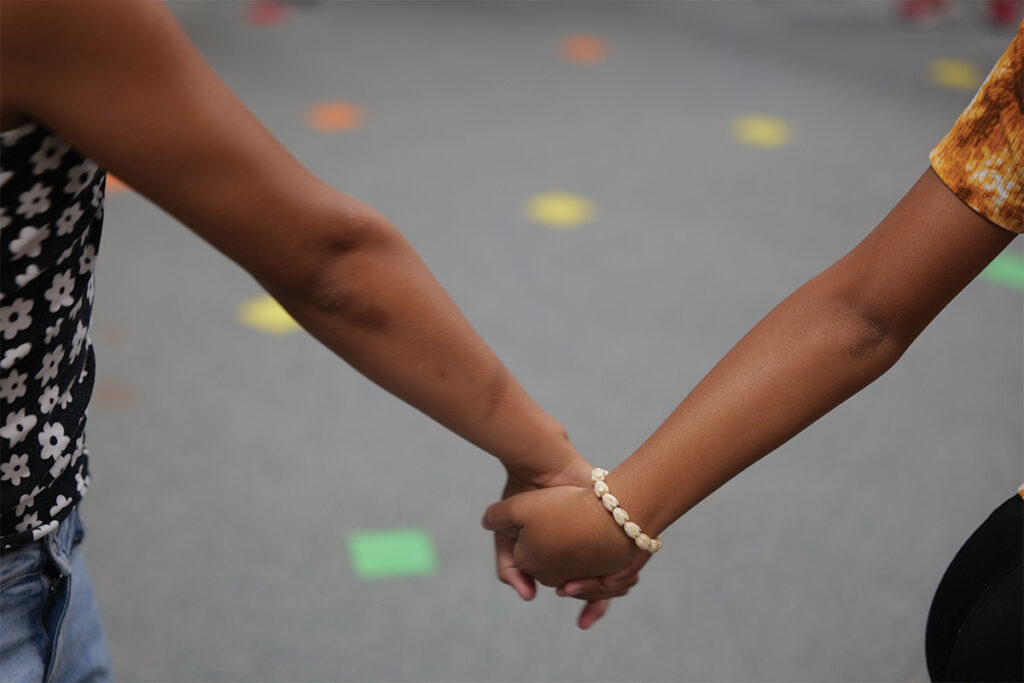Our Hawaiʻi public schools believe every student deserves a safe, respectful learning environment—both in school and online. Acoso escolar, in any form, undermines the well-being and success of students. That’s why we are committed to empowering students, families and communities with tools and resources to prevent and address bullying. From proactive prevention programs to easy-to-use reporting tools like the Aplicación HIDOE Habla ahoraTrabajamos en conjunto con nuestras comunidades para promover una cultura de respeto, responsabilidad y empatía. Juntos, podemos garantizar que cada estudiante se sienta apoyado y seguro, para que pueda prosperar académica y emocionalmente.

What is Acoso escolar?
Acoso escolar is a serious issue that affects students of all ages and backgrounds. While there are many forms of bullying, we’ll be focusing on two primary categories: bullying y cyberbullying. Understanding these two types is important so we can all work together to create a safer and more respectful school environment.
“Bullying”—cualquier acto escrito, verbal, gráfico o físico que lastime, dañe, humille o intimide a un estudiante, incluidos aquellos con estatus de clase protegida, que sea lo suficientemente grave, persistente o generalizado como para crear un ambiente educativo intimidante, amenazante o abusivo.
“Cyberbullying”—electronically transmitted acts, including but not limited to those transmitted through the Internet, cell phone, or other wireless hand-held device initiated by one student toward another student or employee of the department that hurts, harms, humiliates, or intimidates the student or employee; and is sufficiently severe, persistent or pervasive, that it creates an intimidating, threatening, or abusive educational environment. Cyberbullying can occur:
- En el campus u otras instalaciones del departamento, en el transporte del departamento o durante una actividad o evento patrocinado por el departamento dentro o fuera de la propiedad de la escuela;
- A través de un sistema de datos del departamento sin comunicación autorizada por el departamento; o
- A través de una red informática fuera del campus, si la conducta afecta el entorno educativo.
Additionally, cyberbullying may also be based on a person’s protected class, including but not limited to, a person’s race, color, religion, sex, sexual orientation, gender identity, gender expression, age, national origin, ancestry, disability, physical appearance and characteristics, and socio-economic status.
ReporT bullying with our App
HIDOE has an app that allows students to report bullying incidents. Our Aplicación de informes HIDOE Speak Now offers elementary, middle and high school students a way to report bullying incidents—digitally and anonymously, if they choose—that happen on campus, on HIDOE transportation, or at HIDOE-sponsored events.
- Mire los videos a continuación para ver una demostración paso a paso de cómo enviar una sugerencia usando la aplicación.
- Folleto de la aplicación de informes HIDOE de Speak Now (PDF)
Cómo enviar una sugerencia
Estudiantes de secundaria de 7.º a 12.º grado
Estudiantes de primaria de 4.º a 6.º grado
managing bullying
Acoso escolar is a Community Issue
Acoso escolar belongs to all of us. School staff can address incidents and support students at school, but they cannot stop bullying—in all its forms, and in all the places it occurs—on their own. Families, students, and communities have a role to play to adopt and promote a culture of respect, responsibility and resiliency.
Instamos a las familias a que hablen con sus hijos sobre cómo ser respetuosos y empáticos con los demás, incluso con aquellos que son diferentes a ellos. En nuestras escuelas, cultivamos estas características como parte de Nā Hopena Aʻo, social-emotional learning, and other efforts. While bullying can happen to anyone, students may also be targeted because of race, socio-economic status, sexual orientation, gender identity, learning disabilities and other qualities; a violation of leyes de derechos civiles.
Community-wide strategies can help identify and support children who are bullied, redirect the behavior of children who bully, and change the attitudes of adults and youth who tolerate bullying behaviors in peer groups, schools, families and communities.
Any child who is bullied or who witnesses a bullying incident is encouraged to tell a trusted adult or report it using the Speak Now HIDOE app. If an incident happens on our school campuses, on HIDOE transportation, or during a HIDOE-sponsored event, appropriate school personnel will investigate.
Our Response to Acoso escolar
- Prevención: All schools are invested in building a positive school culture and climate to encourage all students to be respectful and empathetic. To address bullying behaviors schools may be implementing one or more of the following:
- Prácticas de comportamiento positivo en toda la escuela que enseñan a los estudiantes a ser estudiantes respetuosos, responsables y compasivos.
- Anti-Bullying Programs: Communities are unique, and schools have different approaches based on their community’s needs. Some schools have students leading their anti-bullying efforts.
- Asociaciones comunitarias: Muchas escuelas cultivan relaciones con agencias comunitarias, proveedores de salud y bienestar, grupos policiales y de policía comunitaria, asesores legales, profesionales culturales y otros para ampliar los apoyos.
- Respuesta: Cuando ocurre un incidente, el director o su designado investiga para:
- Determinar si se cometió un delito según lo definido por las Reglas Administrativas de Hawái (HAR) Capítulo 19 (PDF) ocurrió.
- Realizar una entrada en la base de datos de apoyo estudiantil del Departamento, que permite a las escuelas identificar, monitorear y rastrear las preocupaciones de los estudiantes a lo largo del tiempo.
- Hacer un seguimiento: School staff provide supports to victims and bullies to address ongoing conditions that may have contributed to the bullying incident and to help prevent future incidents. These conditions may include issues at home, stress, abuse, and health, social-emotional and behavioral health issues, among others.
Mala conducta y disciplina estudiantil
Capítulo 19
Las Reglas Administrativas de Hawái, Capítulo 19, rigen las cuestiones relacionadas con la mala conducta estudiantil. which includes bullying, harassment and cyberbullying. It’s important that students and parents review this information to be aware of what constitutes a Chapter 19 violation, and what the consequences are.
Descargue las Reglas Administrativas de Hawái, Capítulo 19:
- Español (PDF)
- Tagalo (PDF)
- Tailandés (PDF)
- Tongano (PDF)
- vietnamita (PDF)
Capítulo 19 Cartas traducidas a los padres
El Departamento reconoce la necesidad de que estas importantes cartas se traduzcan a sus idiomas nativos para que nuestras familias puedan revisarlas y descargarlas. Estas incluyen:
- Capítulo 19 Carta a los padres
- Carta para padres sobre armas de fuego
- Carta para padres sobre dispositivos electrónicos para fumar
- Inglés
- Hawaiano (próximamente)
- Cebuano
- Chino (simplificado)
- Chino (tradicional)
- Chuukese
Encuesta sobre conductas de riesgo en jóvenes
La Encuesta sobre conductas de riesgo en la juventud (YRBS, por sus siglas en inglés) monitorea una amplia gama de conductas relacionadas con la salud entre los estudiantes de secundaria, incluidas las conductas de riesgo para la salud que contribuyen a lesiones no intencionales y violencia; el uso de tabaco; el uso de alcohol y otras drogas; las conductas sexuales relacionadas con embarazos no deseados y enfermedades de transmisión sexual; las conductas alimentarias poco saludables; y la inactividad física. La YRBS se administra cada dos años junto con un esfuerzo nacional de recopilación y análisis de datos por parte de la Centros para el Control y la Prevención de Enfermedades. The Hawaiʻi YRBS is a joint effort of the Hawaiʻi State Departments of Education (HIDOE), Department of Health (DOH), and the University of Hawaiʻi’s Curriculum Research & Development Group. The Hawaiʻi YRBS data and reports are available on the Almacén de datos de salud de Hawái.
